Walkabout through South East Asia, continued
The Drive to Pai
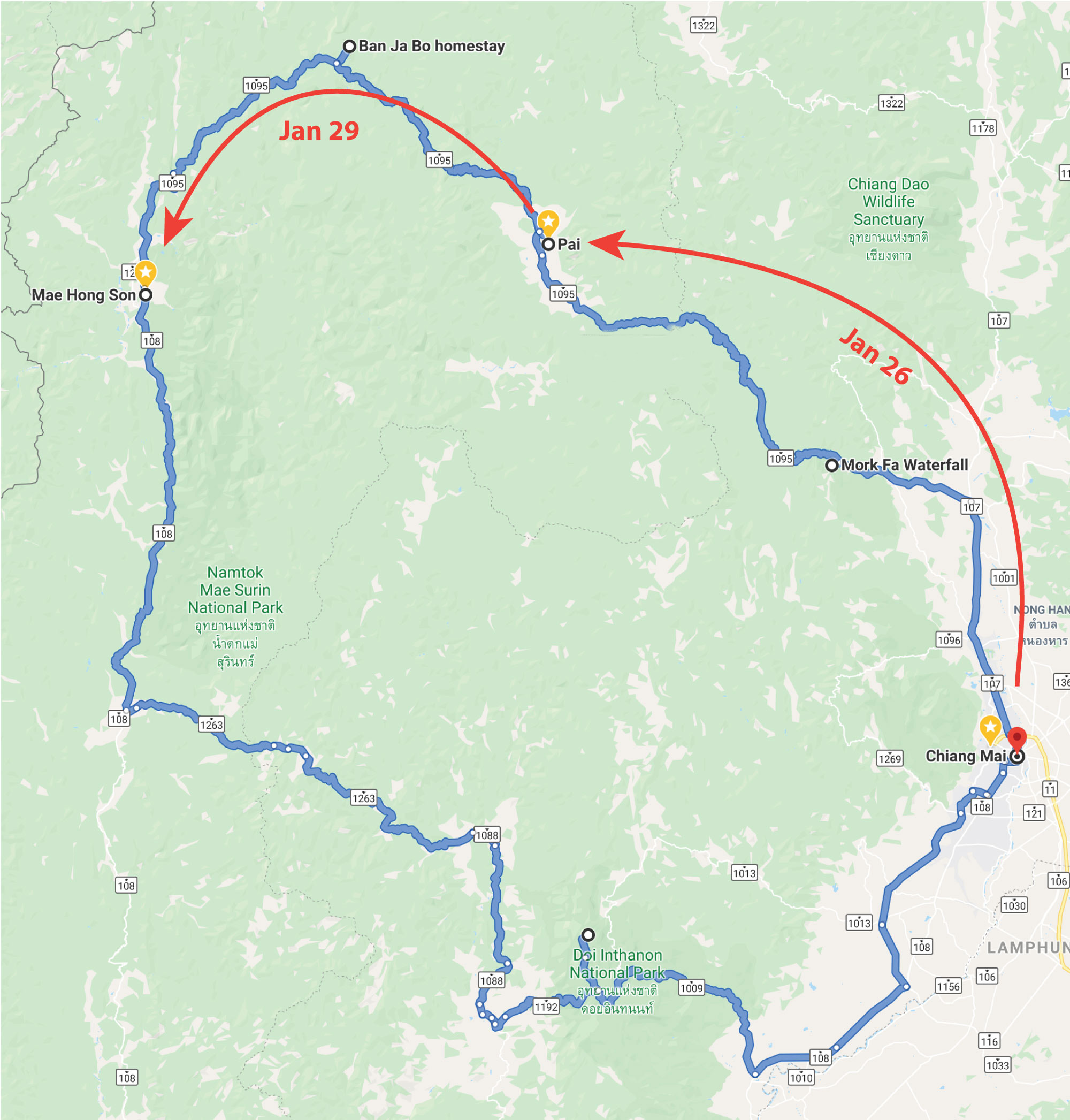
On the “backpackers’ bucket list” is The Mae Hong Son Loop, a route starting in Chiang Mai, to Pai, Mae Hong Son near the Myanmar border, then on to visit two of Thailand’s national parks and its highest mountains, finally back to Chiang Mai. The two-lane road is famously curvy, and reportedly dangerous because it is also heavily traveled. There are reportedly 1864 curves on this route, and having driven it, you can buy a tee shirt with your motorbike and “1864” emblazoned on it to boast of the fact.
At some places along the route we saw spirit houses. People had placed them in either auspicious locations or, we suspected, on dangerous corners where accidents had taken lives. One particular location had more than 20 of these little shrines, some with brightly colored tassels dangling from them, but most with bottles of orange soda. It appears that the spirits in this particular area have a fondness for Orange Fanta.

We aren’t that adventurous, and had hired a guide (Ami) and a driver to take us along two legs of the Loop. Still, for the first leg there are 762 curves on the road to Pai. Ami warned us that many tourists get violently carsick, and there are actually vomitoriums at certain spots along the way. I told her not to worry—Mary’s used to my driving.
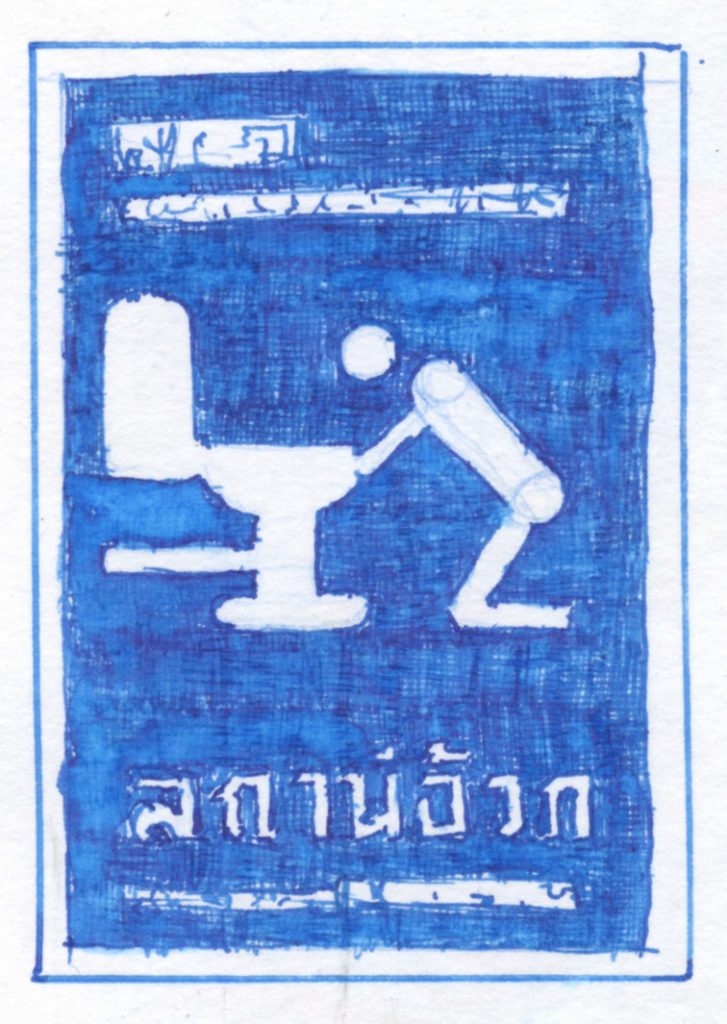
We took a break on the way and stopped to view the beautiful Mok Fa Waterfall (Mork Fa, on Google Maps). It’s tall and slender, with a neat pool below, where people were bathing. I sat on a rock beside the stream below and tried my hand at a watercolor.
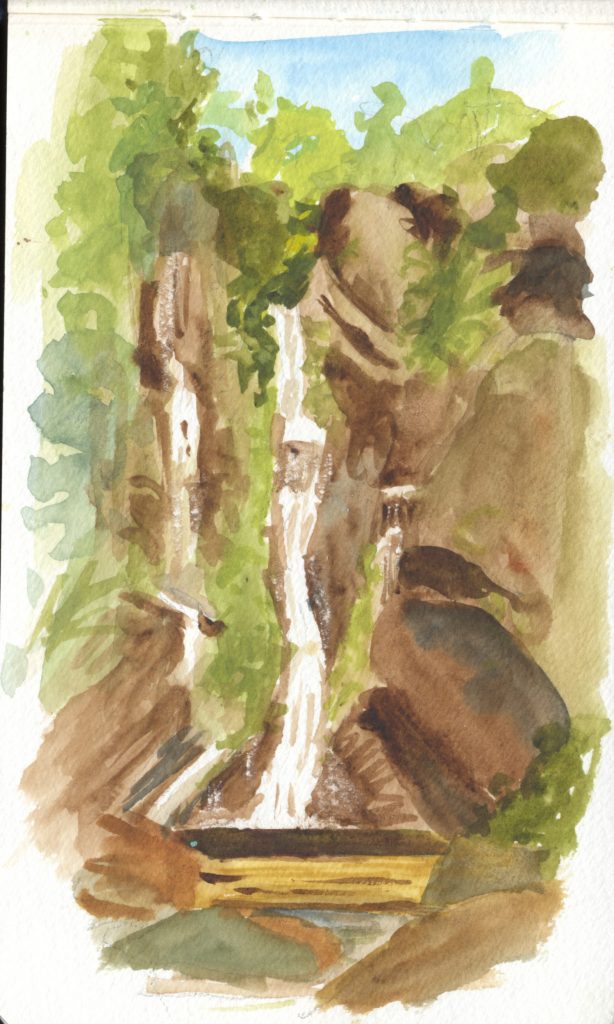
Later, wanting to capture some of the amazing foliage and the cave entrance to the right of the falls, I tried again.
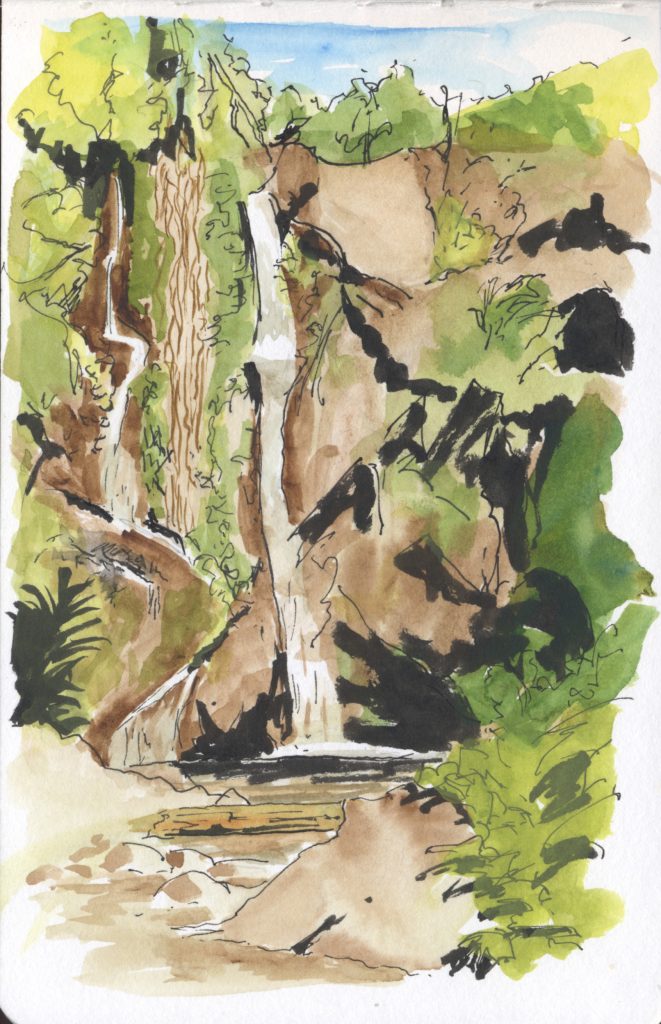
Pai
True to our expectations, Pai is a mecca for trekkers and backpackers: A row of bungalows for rent sits along the river; you cross a bamboo bridge to get to it. Friendly dogs wander the streets, which are lined with food carts, one of which is actually a converted VW Microbus from the 60’s. Across from that bus was perhaps the most popular food stall, selling Vietnamese-style Banh Mí. We got there early, so the wait for a sandwich was only 20 minutes long.

Our hotel was the Reverie Siam, which has a decidedly belle epoch decor. I thought that was incongruous with the town’s vibe, but I enjoyed paging through their collection of Punch magazines from the first half of the 20th Century.
It was COLD in Pai! The servers in the hotel’s restaurant, which is open-air, were wearing parkas, and we had to borrow one of the hotel’s space heaters for our room. At night we were glad we had kept the pajamas that Qatar Airways issues on their long flights.
Excursions
We went on two excursions while in Pai. On the afternoon of Monday the 27th we set out for the ethnic Chinese village of Yuan Li. Here was a great example of the local tourism initiative: Above the village is a beautiful outlook of the surrounding mountains. The locals have built it out with an event space and other attractions aimed particularly at the Chinese Market. The viewing platform has a little self-serve kiosk where a man can buy his girlfriend or wife a tassel to sign and hang from the tree that stands there. On the next hill is not only a swimming pool, but a tea plantation and a strawberry farm where people can pick their own.
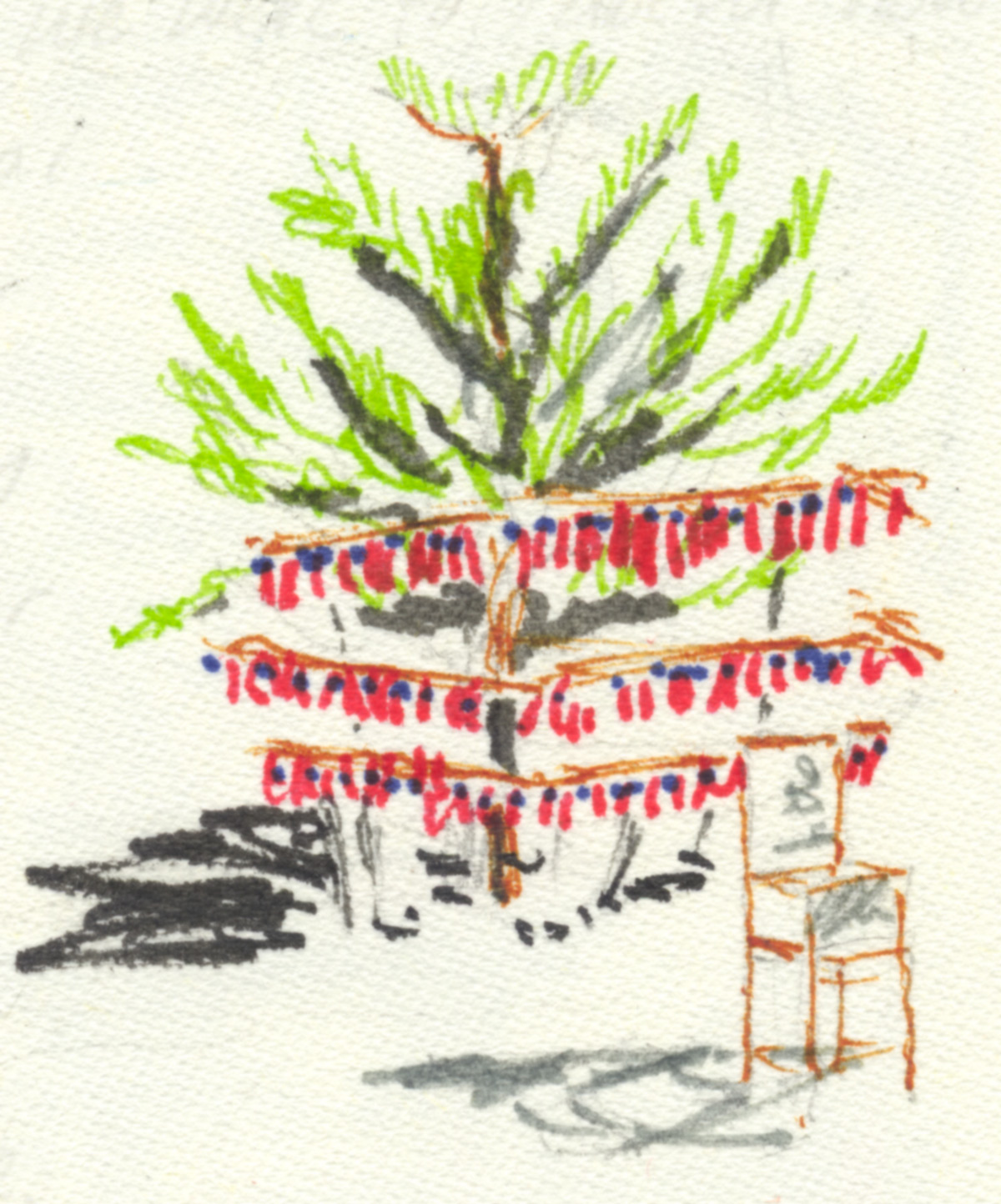
This was our first indication of what was going on globally in terms of the COVID-19: there were no Chinese tourists. By then the borders were closed to Chinese visitors.
In the village below was an interesting Buddhist temple with a shrine dedicated to the memory of King Narait, a national hero who fought nearby, and who legend says loved his pet rooster. The shrine is festooned with rooster statues that stand as offerings to his memory; the entire perimeter wall is lined with them.
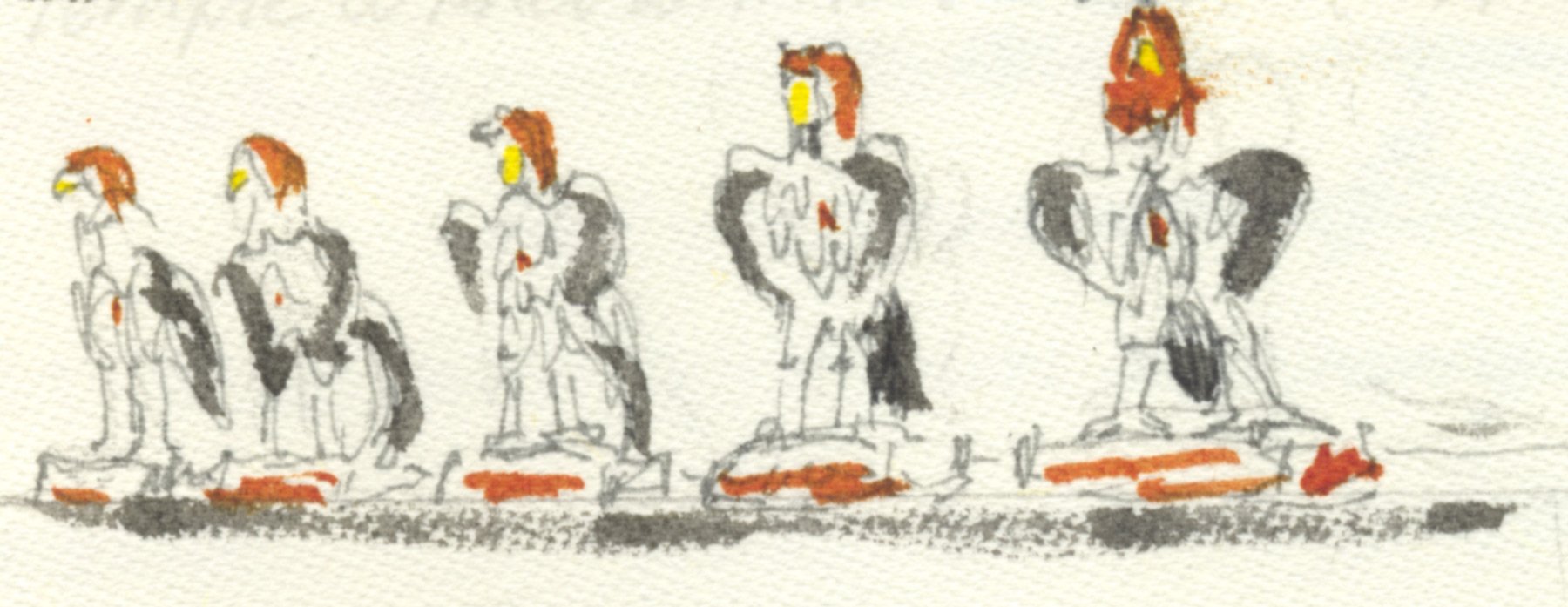
Another example of Local Tourism is the Bamboo Bridge at Ko Ko So. It’s an elevated boardwalk that wanders through the rice fields for about 800 meters. Its stated purpose is to enable the monks of the monastery to come into town to collect alms during rainy season when the rice fields were all flooded. But it has become much more than that, as it now connects all the farms and outbuildings as well. Perhaps a little hokey, but impressive and fun to see.
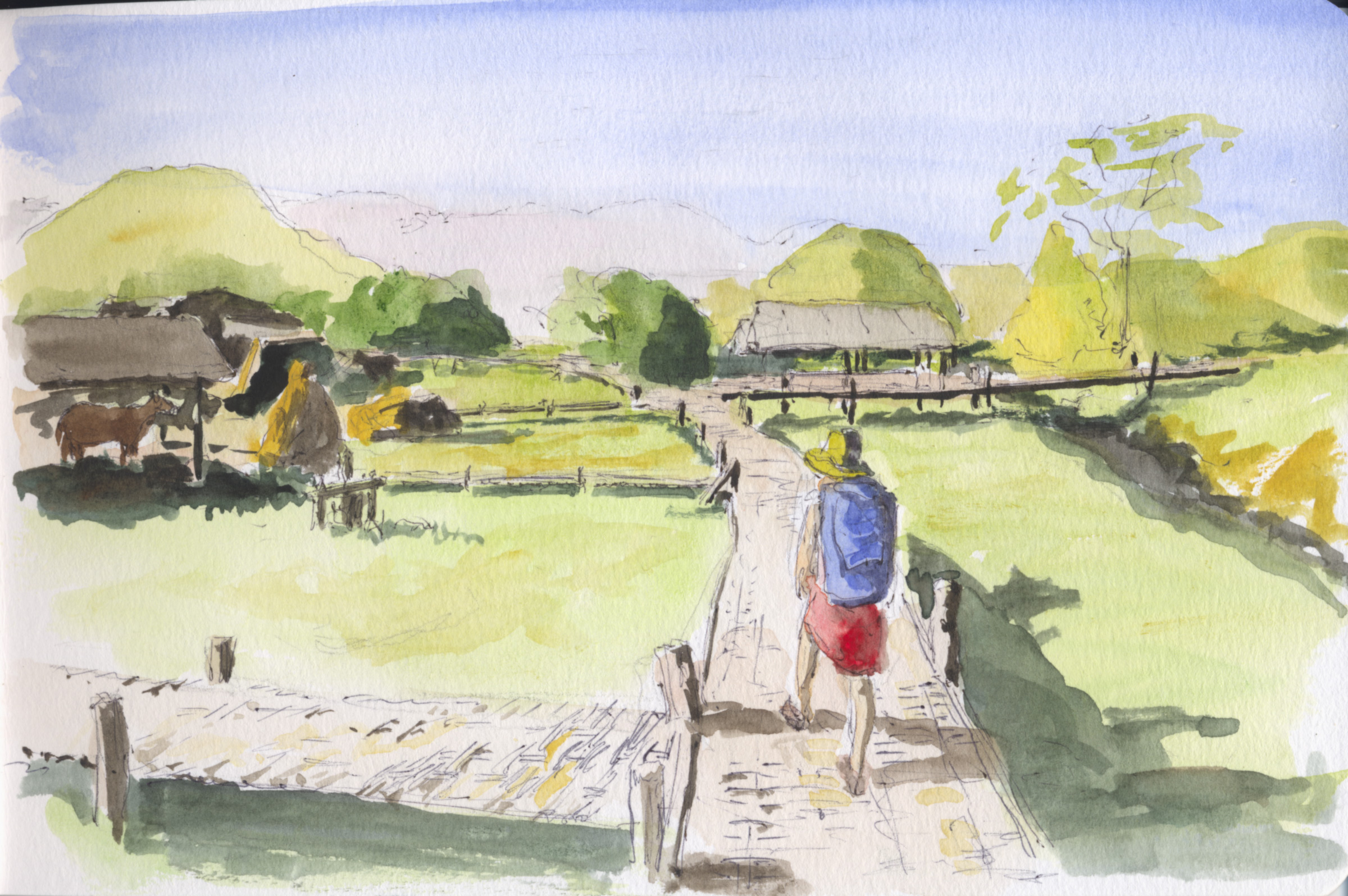
This excursion was topped off with High Tea for just the two of us in a pavilion with a sunset view of distant mountains overlooking the valley below. A little over-the-top bit of luxury — like the decor of our hotel, it seems to me a bit of a throwback to colonial times — but the view was amazing and the sunset was spectacular. (That the fields below were growing garlic during the dry season did not detract us; we like garlic.)

The next morning we headed out Ban Jabo (or Ban Ja Bo). For years this hamlet was just a fuel stop on the way to Myanmar.
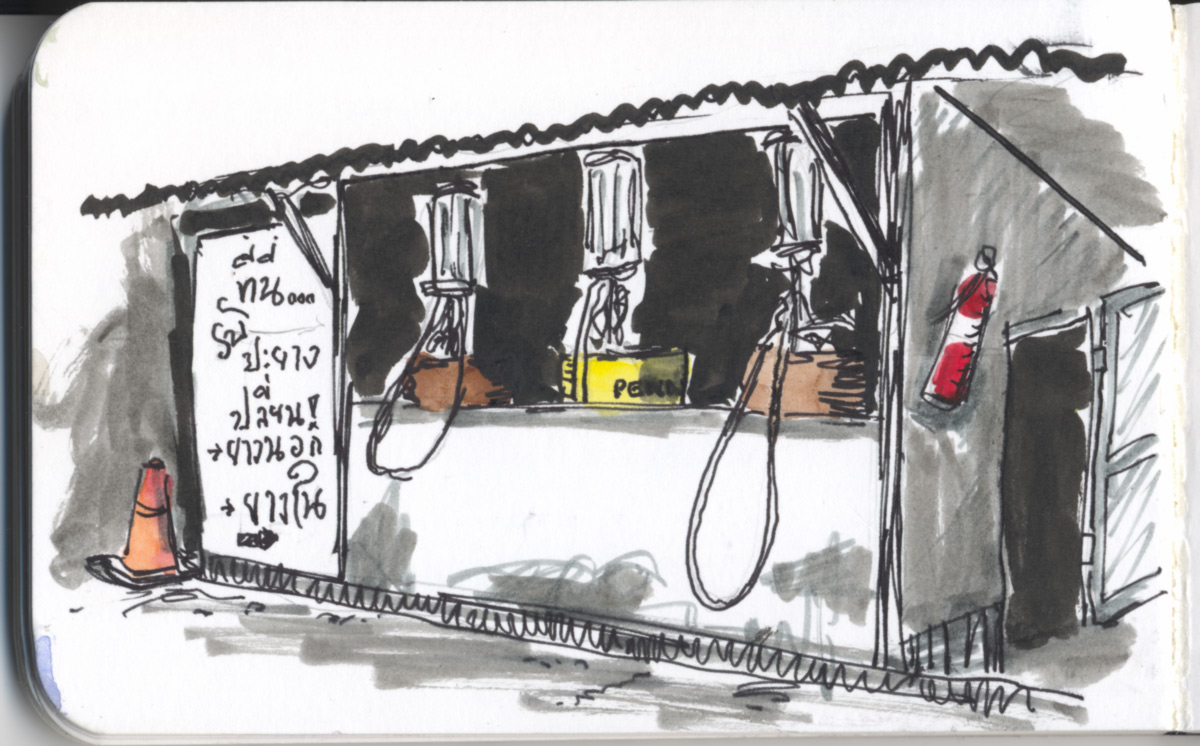
A traveling photographer took a photo from the side of the road leading to Ban Jabo and posted it on the Internet. It went viral and made Ban Jabo a destination for trekkers. It was not long before the locals took advantage of this. They soon built a restaurant near the location of that photo, and have set up campsites for backpackers. In fact, “Ban Jabo Homestay” can be found on Google Maps.
I grabbed a quick pencil sketch of the view while standing on the wooden platform that stands at the site of the original photo, then turned it into a watercolor, finally an illustration in my journal.

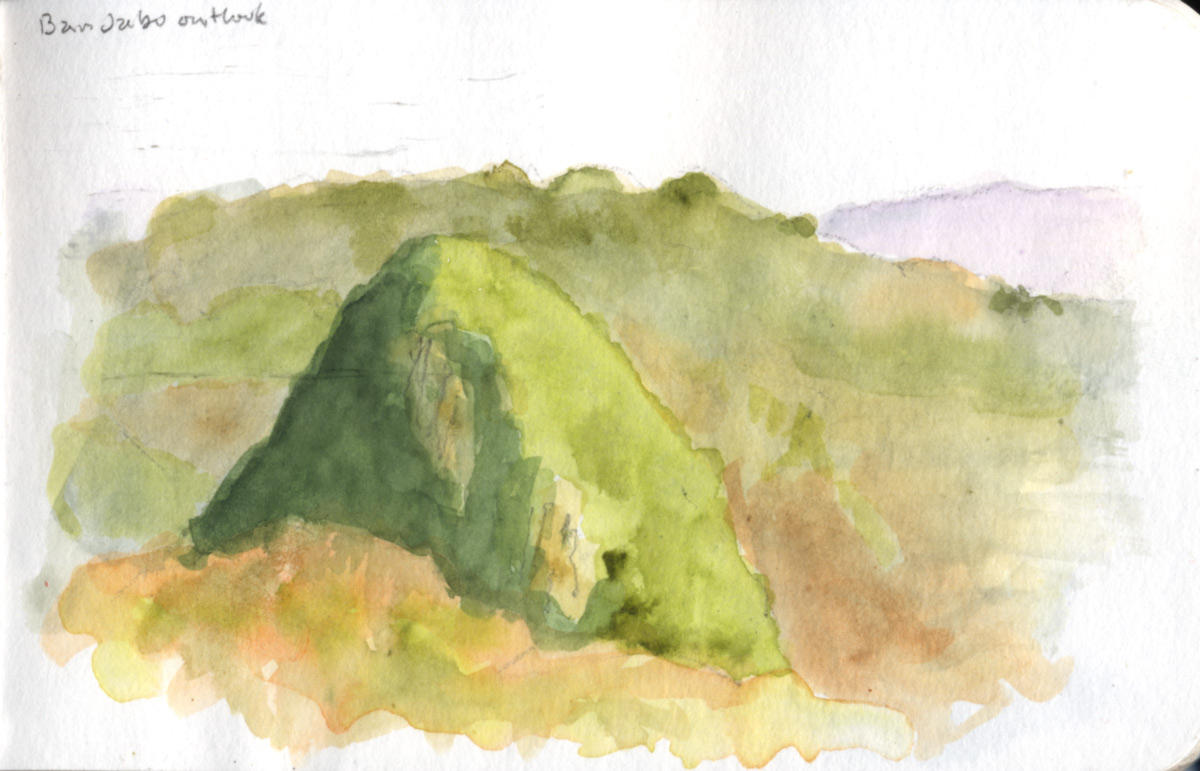
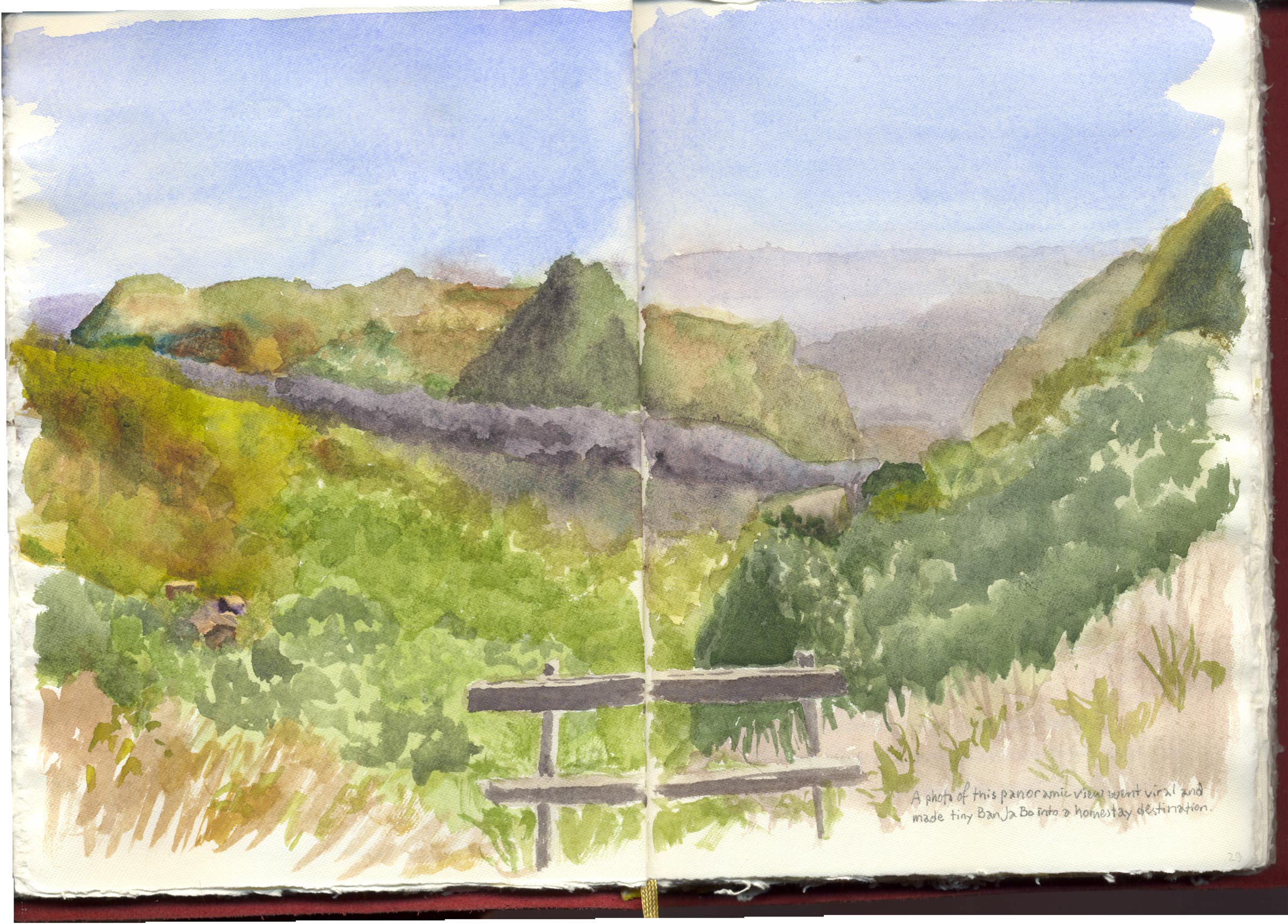
Walking through the village we saw the “homes” that offer accommodations. They are built to a certain code for safety and cleanliness and have electricity. But they look exactly like the places Mary stayed when trekking through Southeast Asia when she was younger. It was a nostalgic moment.
After Ban Jabo we were taken to the Tham Lod Cave, a famous “coffin cave.” At some time in the ancient past important individuals were interred in a hollowed-out teak log. Their coffin was placed in a remote corner of a cave. What remains of this coffin now is just shards of wood.
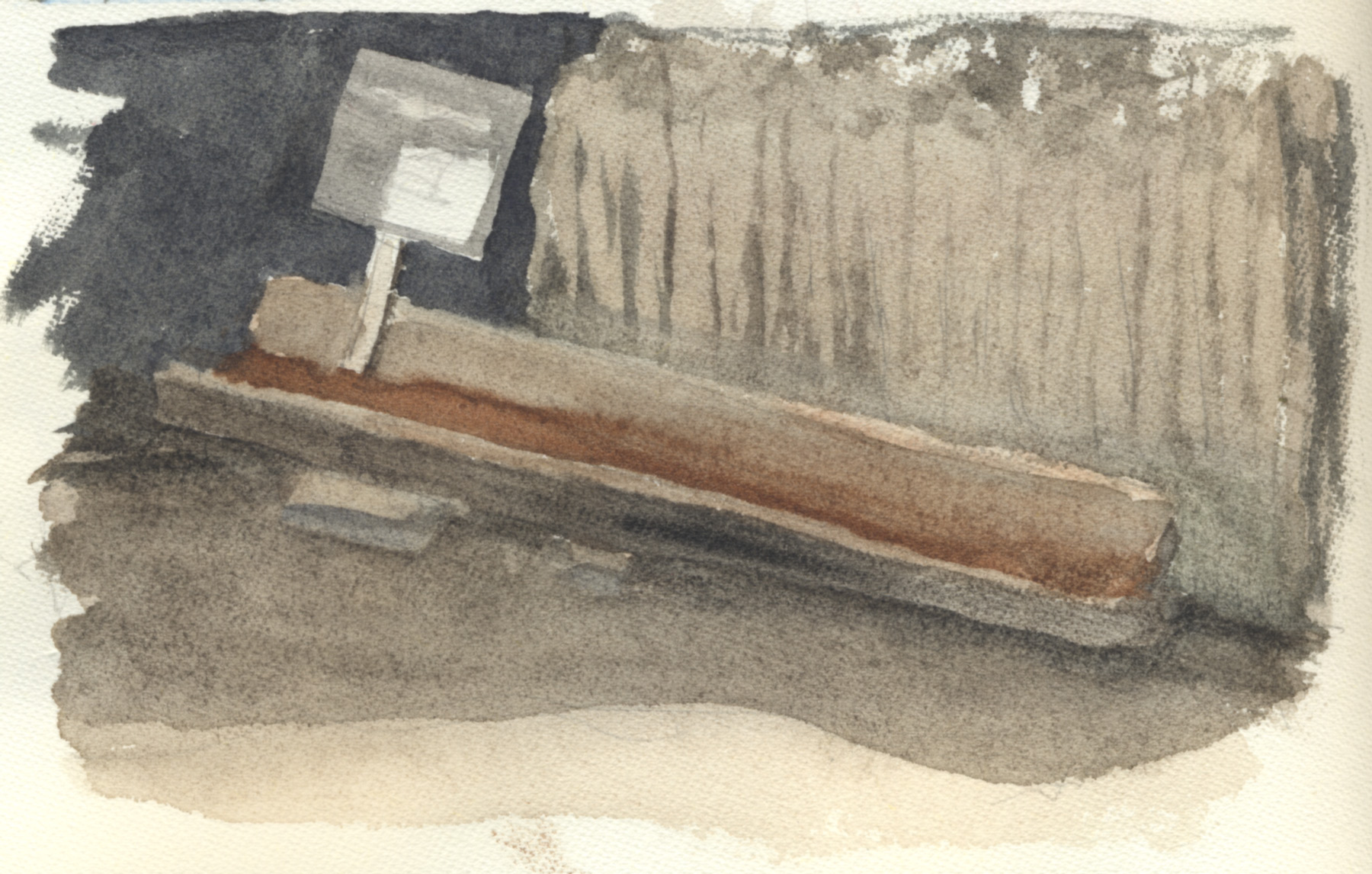
I learned an important lesson in the cave: Don’t wear a wide-brimmed hat! I bloodied my scalp on a low-hanging stalactite. Happily, our driver had a good first aid kit in the car and Mary was able to patch me up.
On the way back to the hotel we stopped at a lovely riverside restaurant that was decorated with beautiful plants and flowers. While waiting for our food I sketched one of their planters, in the shape of a scooter.
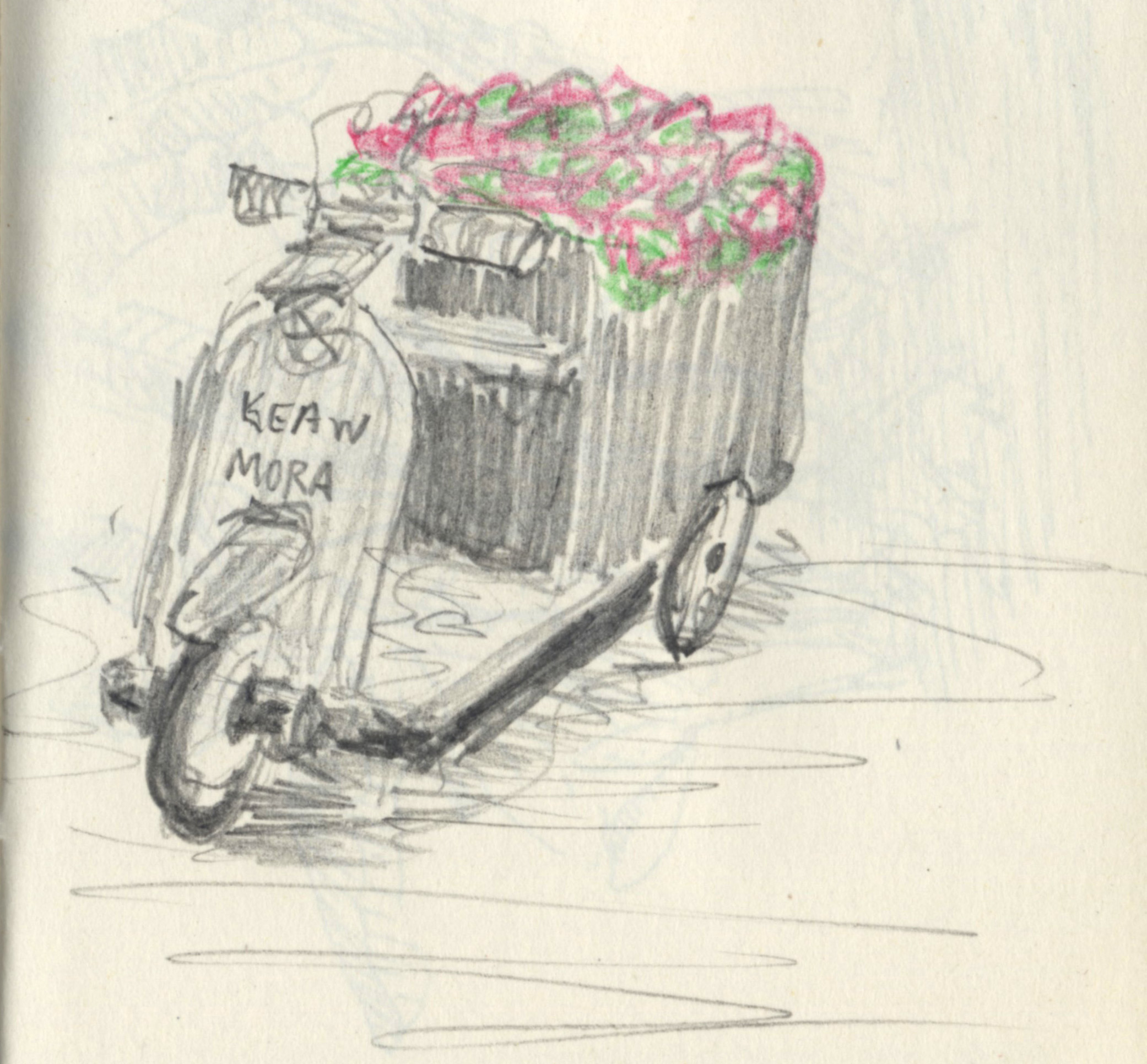
Next: On to Mae Hong Son
